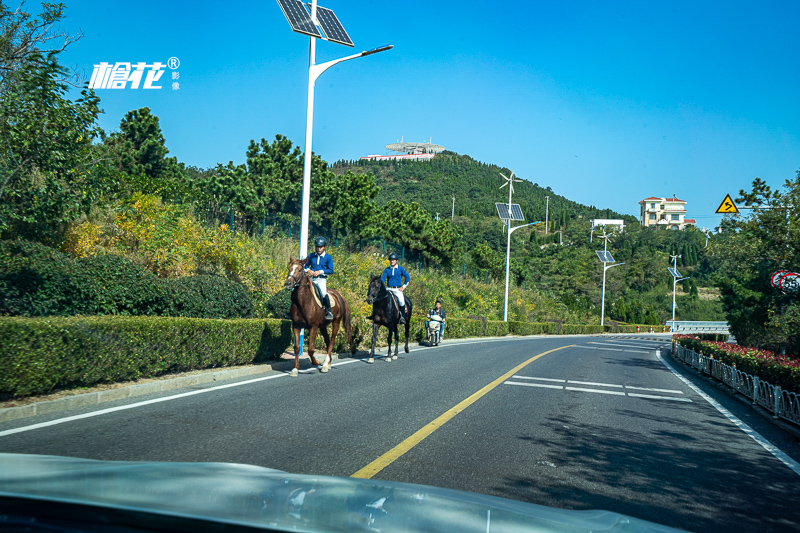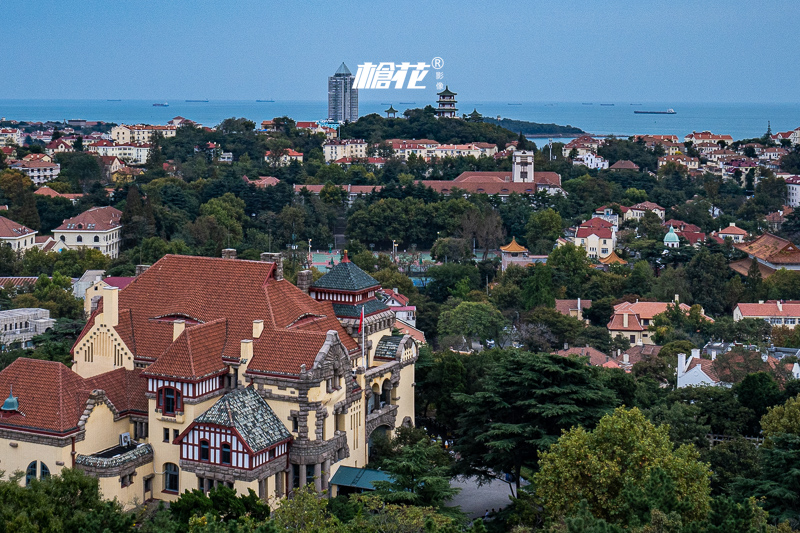本文目录
一、东京文化旅游景点介绍英文版 东京著名景点英文介绍
Arashiyama(岚山?) is a district on the western outskirts of Kyoto, Japan. It also refers to the mountain across the _i River, which forms a backdrop to the district.
Notable tourist sites in Arashiyama include
The Iwatayama Monkey Park on the slopes of Mount Arashiyama. Over 170 monkeys live at the park. While the monkeys are wild, they have become accustomed to humans. The park is located on a small mountain not far from the Saga-Arashiyama rail station. Visitors can approach and photograph the monkeys. At the summit is a fenced enclosure, from within which visitors can feed the monkeys.
The romantic"Moon Crossing Bridge"(渡月桥,Togetsukyō), notable for its views of cherry blossoms and autumn colors on the slopes of Mt Arashiyama.
The tombstone of the Heike courtesan Kogo of Sagano.
Tenryū-ji, the main temple of the Rinzai school, one of the two main sects of Zen Buddhism in Japan.
The hamlet of Kiyotaki, a small scenic village at the base of Mt Atago, the home to a notable Shinto shrine.
Matsuo Shrine, half a mile south of the area, which is home to a blessed spring. It is also one of the oldest shrines in the Kyoto area, founded in 700. The alleged restorative properties of the spring bring many local sake and miso companies to the shrine for prayers that their product will be blessed.
Kameyama koen has a stone commemorating Zhou Enlai's visited to Arashiyama. He was moved by the cherry blossoms and mountain greenery. The four poems Zhou Enlai wrote about his visit are engraved on a stone monument:"Arashiyama in the Rain."
Nijō Castle(二条城,Nijō-jō?) is a flatland castle located in Kyoto, Japan. The castle consists of two concentric rings of fortifications, the Ninomaru Palace, the ruins of the Honmaru Palace, various support buildings and several gardens日本长崎景点门票. The surface area of the castle is 275,000 square meters, of which 8000 square meters is occupied by buildings.
Present plan of Nijō Castle(click for detailed view)In 1601, Tokugawa Ieyasu, the founder of the Tokugawa Shogunate, ordered all the feudal lords in Western Japan to contribute to the construction of Nijō Castle, which was completed during the reign of Tokugawa Iemitsu in 1626. Parts of Fushimi Castle, such as the main tower and the Kara Gate, were moved here in 1625-26.[1] It was built as the Kyoto residence of the Tokugawa Shoguns. The Tokugawa Shogunate used Edo as the capital city, but Kyoto continued to be the home of the Imperial Court. Kyoto Imperial Palace is located north-east of Nijo Castle.
The central keep, or donjon, was struck by lightning and burned to the ground in 1791.
In 1788, the Inner Palace was destroyed by a city-wide fire. The site remained empty until it was replaced by a prince's residence transferred from the Kyoto Imperial Palace in 1893.日本玩景点门票多少
In 1867, the Ninomaru Palace was the stage for the declaration by Tokugawa Yoshinobu, returning the authority to the Imperial Court. Next year the Imperial Cabinet was installed in the castle. The palace became imperial property and was declared a detached palace. During this time, the Tokugawa hollyhock crest was removed wherever possible and replaced with the imperial chrysanthemum.
In 1939, the palace was donated to the city of Kyoto and opened to the public the following year.
Ryōan-ji(Shinjitai: _安寺, Kyūjitai:龙安寺?, The Temple of the Peaceful Dragon) is a Zen temple located in northwest Kyoto, Japan. Belonging to the Myoshin-ji school of the Rinzai branch of Zen Buddhism, the temple is one of the Historic Monuments of Ancient Kyoto, a UNESCO World Heritage Site.
The site of the temple was originally a Fujiwara family estate. It eventually came into the hands of the Hosokawa clan branch of the Fujiwaras. Hosokawa Katsumoto inherited the residence, and lived here before the _nin War. Katsumoto willed the war-ravaged property to be converted into a Zen sect temple complex after his death. Later Hosokawa emperors are grouped together in what are today known as the"Seven Imperial Tombs" at Ryoan-ji. The burial places of these emperors-- Uda, Kazan, Ichijō, Go-Suzaku, Go-Reizei, Go-Sanjō, and Horikawa-- would have been comparatively humble in the period after their deaths. These tombs reached their present state as a result of the 19th century restoration of imperial sepulchers(misasagi) which were ordered by Emperor Meiji.[1]
Ryōan-ji's tsukubai(蹲踞?), which is a small basin provided at Japanese Buddhist temples for visitors to purify themselves by the ritual washing of hands and rinsing of the mouth.An object of interest near the rear of the monks quarters is the carved stone receptacle into which water for ritual purification continuously flows. This is the Ryōan-ji tsukubai(蹲踞?), which translates literally as"crouch;" and the lower elevation of the basin requires the user to bend a little bit to reach the water, which suggests supplication and reverence.[2] The kanji written on the surface of the stone are without significance when read alone. If each is read in combination with口(kuchi), which the central bowl is meant to represent, then the characters become吾,唯,足,知. This is read as"ware tada taru(wo) shiru" and translates literally as"I only know plenty"(吾= ware= I,唯= tada= only,足= taru= plenty,知= shiru= know). The meaning of the phrase carved into the top of the tsukubai is simply that"what one has is all one needs" and is meant to reinforce the basic anti-materialistic teachings of Buddhism.
The absence of a dipper is intended to imply that the water is for the soul only and that it is necessary to bend the knee in humility in order to receive its blessing.
Kiyomizu-dera(清水寺?), full name Otowa-san Kiyomizu-dera(音羽山清水寺?) is an independent Buddhist temple in eastern Kyoto. The temple is part of the Historic Monuments of Ancient Kyoto(Kyoto, Uji and Otsu Cities) UNESCO World Heritage site.[1] Not one nail is used in the whole temple. The temple should not be confused with Kiyomizu-dera in Yasugi, Shimane, which is part of the 33-temple route of the Chūgoku 33 Kannon Pilgrimage through western Japan.[2]
其实这些都是维基百科找来的,本来想给链接的,百度说我有广告,只贴了部分,其他的可用google维基百科英文版找,包括景点介绍,历史什么的很全的。
日本又哪些景点(中英文互译的)
大涌谷(Owakudani)是箱根最著名的旅游景点。在绿树环抱的箱根中惟独此处山岩裸露,岩缝间喷出的地热蒸气雾气腾腾,令人感到地球的生命运动,尉为壮观。由此可眺望富士山和箱根群山的美丽景色。
东京迪斯尼有两大主题乐园,七座舒适的大饭店,以及其它购物娱乐设施所组成的欢乐世界。是大人找回童真,小孩寻找快乐的地方。
Tower)位于东京市内,建成于1958年,塔高333米,这座日本最高的独立铁塔上部装有东京都7个电视台、21个电视中转台和广播台等的无线电发射天线。在250米高的地方,也设有一个特别展望台。展望台四边都是落地的大玻璃窗,窗向外倾斜。
Mountain)位于本州岛中南部,海拔3776米,是日本最高峰,日本人奉之为“圣山”,是日本民族的象征,距东京约80公里,跨静冈、山梨两县,面积为90.76平方公里。整个山体呈圆锥状,山顶终年积雪。
Temple)位于奈良市的唐招提寺是由中国唐代高僧鉴真和尚亲手兴建的,是日本佛教律宗的总寺院,这座具有中国盛唐建筑风格的建筑物被确定为日本国宝。
富士山,是一座跨越在日本静冈县(富士宫市、裾野市、富士市、御殿场市、骏东郡小山町)与山梨县(富士吉田市、南都留郡鸣_村)之间的活火山。
东京塔是东京地标性建筑物,位于东京都港区芝公园,高332.6米。东京塔除主要用于发送电视、广播等各种无线电波外、还在大地震发生时发送JR列车停止信号,兼有航标、风向风速测量、温度测量等功能。
阿苏山是日本著名活火山。位于九州岛熊本县东北部,是熊本的象征,以具有大型破火山口的复式火山闻名于世。略呈椭圆形,南北长24公里,东西宽18公里,周围约120公里,面积250平方公里。
4,唐招提寺(Tōshōdai Temple)
唐招提寺,日本佛教律宗建筑群。简称为招提寺。在日本奈良市西京五条。由中国唐朝鉴真主持,于公元759年建成,与东大寺的戒坛院并为传布和研究律学的两大道场。
鹿苑寺(ろくおんじ),是位于日本京都市北区的临济宗相国寺派的寺院。其中,内外都贴满了金箔的三层楼阁建筑(舍利殿)也被称为金阁,包括舍利殿在内的寺院整体也被称为金阁寺(きんかくじ)。该寺为相国寺的山外塔头寺院。
参考资料来源:百度百科-唐招提寺
Tokyo is the capital of Japan.It is the biggest city in Asia and it is also very beatiful.You can see the beatiful mountain in Tokyo.There is snow on it and it looks very nice.I hope on day I can go there.
二、日本东京旅游主要景点介绍
导语:东京是日本的首都,也是世界上最大的城市之一。在很多亚洲年轻人的眼里,东京是一座充满活力和时代感的城市,它总是走在流行的最前线。流行音乐、偶像电视剧、Walkman、MD、手机、化妆品、电子游戏、厚底鞋以及前卫的化妆、这一切年轻人的最爱,都从这里开始。
富士山在日语中的意思是“火山”,它海拔3776米,面积为90.76平方公里,屹立于本州中南部,跨静冈、山梨两县,东距东京80公里。富士山四周有剑峰、白山岳、久须志岳、大日岳、伊豆岳、成就岳、驹岳和三岳等“富士八峰”。
富士山北麓有富士五湖,从东向西分别为山中湖、河口湖、西湖、精进湖和本栖湖,湖光山色十分宜人。河口湖中所映的富士山倒影,被称作富士山奇景之一。夏季适于露营、游泳、钓鱼等,冬季则是滑雪滑冰的好场所。据说,在山顶的火山湖中沐浴一下,能消灾免祸。
上野是指位于东京都台东区的区域。上野站附近的上野公园周边,有动物园、博物馆、美术馆相连,是个绝对值得观光浏览的地区。而上野公园是观赏樱花的名胜。一到开花的时节,众多观赏樱花的客人也会来访。
在上野站和御徒町站之间的区域,有著名的商店街“阿美横丁”(アメヤ横丁),是一座位于山手线高架铁路下的大型市集。食品、服装、鞋、包、宝石、药及化妆品应有尽有,整年都是客源不断。在购买商品时,有时可以跟店员还价而买到价格便宜的商品。
浅草寺是东京都内最古老的寺庙。作为了解日本民族文化的旅游名胜,来自世界各国的游客,络绎不绝。寺西南角有一座五重塔,仅次于京都东寺的五重塔,为日本第二高塔。寺东北有浅草神社,造型典雅,雕刻优美。浅草有名目繁多的节日,一年四季都有庆祝活动。
东京的歌舞伎町是一个不折不扣的娱乐中心:电影院、电动玩具城、DISCO舞厅、酒吧等等,从深夜到黎明,永远都是人头攒动,永远都是灯红酒绿。在歌舞伎町中央的喷水池周围,还有数十家电影院,东京上演的电影,几乎都可以在此看到。
东京迪斯尼度假区(Disneyland)离东京有10公里,是日本仿造美国的迪斯尼乐园修建的游乐场,于1983年4月开幕,其宗旨是集历史知识、童话故事、自然风光和现代科学之大成,寓知识于娱乐,力求各个年龄层次的人都能在此找到乐趣。
上野公园是东京最大的公园,面积有52.5万平方米。上野公园是东京最著名的`赏樱胜地。园内樱花数目多达1200棵。风过之处,落樱雨下,十分壮观。代表性的樱花品种“染井吉野”,因为是在1885年左右于上野公园所发掘而出的才得以将其美名遍传全国。每年樱花季节,都要在此举此举办隆重的“樱花祭”。到周末时,来赏樱的游客络绎不绝,直到夜晚。在夜灯映照下欣赏“夜樱”,别有一番动人滋味。
东京除了原宿之外的另一个年轻人的聚集地——涩谷,是学生们放学后最常去的地方。涩谷不只是年轻人的乐园,各个年龄层的人都可以在此找到乐趣。东急本店旁边,平成元年建成的Bunkamura是集音乐大厅,剧场,美术馆,电影院为一体的综合型文化设施,它使涩谷同时具有了高雅的文化品味。还有上演以观世流派能剧和狂言剧的观世能乐堂;为您展示电从发电厂到您家的全过程的电力馆;收藏全世界的香烟包装和制盐技术的烟草及盐的博物馆;可以了解电视节目制作实景和体验3D高画质影院的NHK直播间乐园……从成人到孩子,涩谷充满了精彩去处。如果要充分享用美食,那涩谷一定是最佳选择。这里包罗了世界各地的名菜。在中心街还有为数众多的旋转寿司店形成群雄割据状态,为了竞争而各施绝技,在这里品尝寿司一定会让您得到最大的满足。
三、日本东京十大著名景点
日本东京十大著名景点是东京迪士尼乐园、富士山、京都、冲绳、奈良公园、横滨、长崎、北海道、原爆之家、大阪城堡。日本景点加门票
东京迪士尼乐园被视为全世界最受欢迎的主题公园之一。它是迪士尼公司在亚洲的第一个乐园,将儿童和成人的喜好整合在一起,是家庭旅游的最佳去处。自开业以来,它一直是日本最受欢迎的景点之一。
富士山是日本的象征之一,是世界上最高的活火山之一。它被称为“日本信仰的富士山”,吸引了众多的登山爱好者。在夏季,很多游客徒步登上富士山,感受日出、日落和居高临下的美景。此外,入珠穆朗玛峰游同样具有一定的挑战性。
京都是日本传统文化和美丽庭院的代表之一,拥有众多的世界遗产。在这里,游客可以浏览一系列美丽的寺庙和神社,例如金阁寺和清水寺。此外,在京都也可以品尝到传统的和式料理和茶道。
冲绳是日本最南端的一个岛屿,有着美丽的沙滩,清澈的海水和壮丽的珊瑚礁。这里气候温暖,是冬季避寒和夏季度假的理想去处。此外,冲绳还有丰富的文化遗产和传统的琉球文化。日本景点门票购买
奈良公园是日本著名的公园之一,以其大量的鹿而闻名。这里有众多古老的寺庙和神社,充满了历史和文化气息。在公园里,游客可以近距离接触到和鹿,还可以购买饲料喂养它们。
横滨是一个以其西方文化建筑和现代化建筑而著名的城市。它也是日本著名的港口城市之一,并拥有非常多的购物中心和游乐设施。在这里,游客可以欣赏到一些现代的艺术品和文化活动。
长崎是一座位于日本西南部的港口城市,由其历史和文化气息而闻名。它是日本最早开放的城市之一,并且在第二次世界大战期间受到美国的轰炸。此外,游客还可以踏上端岛,去欣赏那里的特有的环境和文化。
北海道是日本最大的一个岛屿,也是日本最北的一个地区。这里有美丽的景色,清新的空气和美味的食物。游客可以在这里呼吸到清新的空气,探索各种自然美景,品尝到新鲜的海鲜和其他美食。
广岛原爆之家是日本历史上最具代表性的建筑之一,这里是原子弹引起的广岛爆炸的现场。今天,它已成为一个和平博物馆,让人们了解战争的残酷性和和平的重要性。
大阪城堡是日本最著名的古建筑之一,有着悠久的历史和极富文化气息。这个城堡被视为日本的积极实践,游客可以在这里了解到日本的历史和文化。
以上内容参考:百度百科-东京迪士尼乐园











